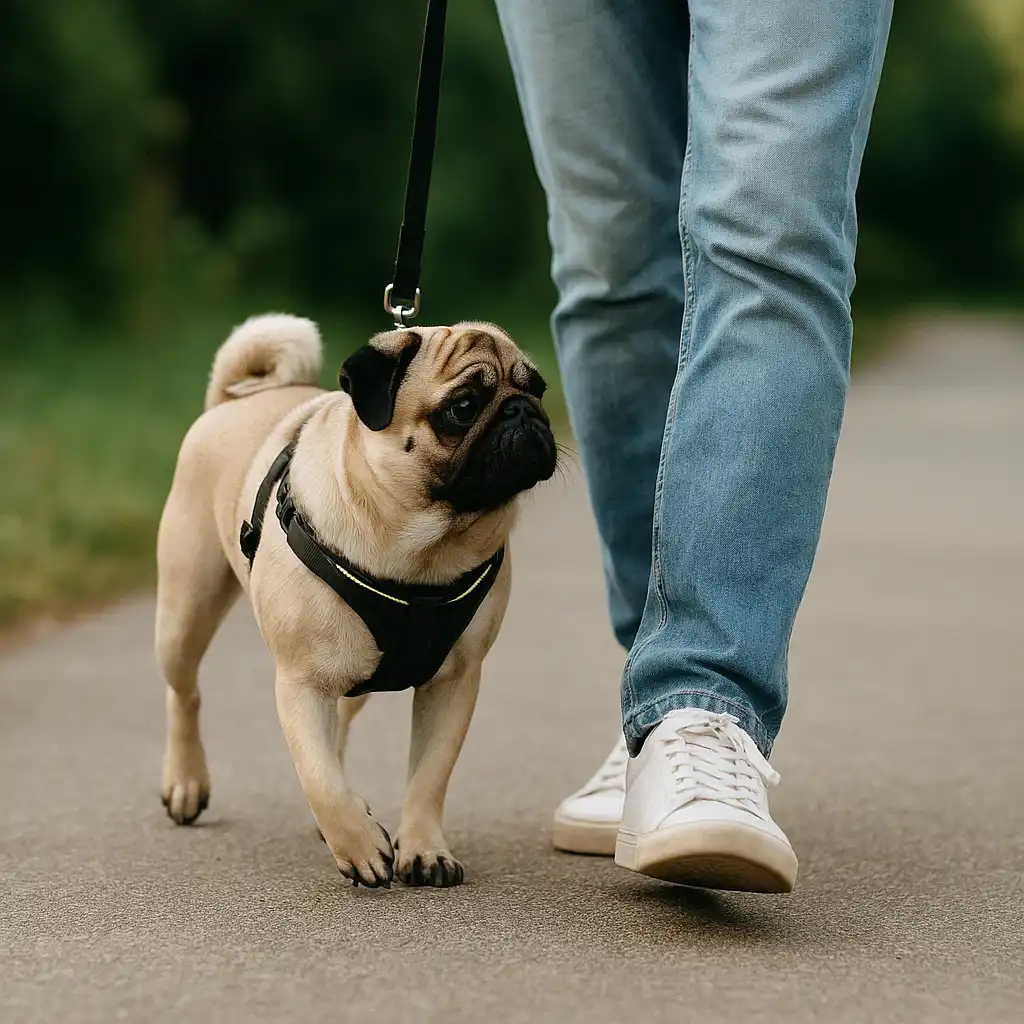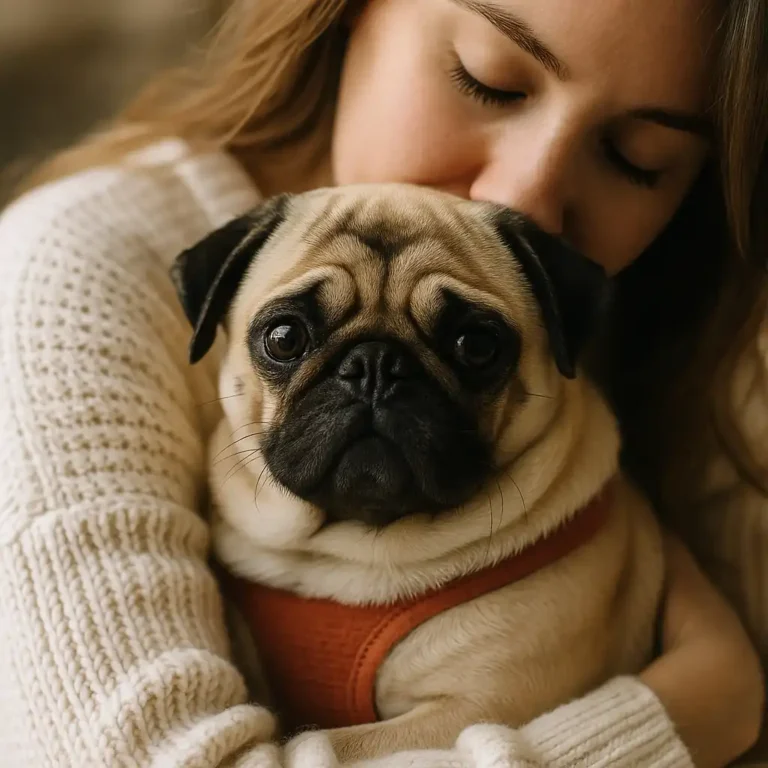How to Train a Dog to Walk Beside You: A Pug Owner’s Guide

Training your pug to walk politely beside you can transform daily strolls from a tug-of-war into a relaxed bonding experience. Though pugs are small, their strong personalities and love for exploring can make leash training a bit tricky. With consistency, patience, and a few smart techniques, you can help your pug master the art of walking calmly at your side.
Understanding Your Pug’s Walking Behavior
Pugs are naturally curious and affectionate. They love to sniff, greet strangers, and sometimes pull ahead during walks. This behavior isn’t disobedience—it’s excitement. However, allowing pulling or erratic walking can lead to unsafe situations, especially near roads or other dogs. Teaching your pug to stay beside you sets a structure that helps them feel secure and focused during walks.
Start with the Right Equipment
Before training begins, make sure you have the proper gear. A well-fitted harness is essential for pugs due to their sensitive necks and brachycephalic (short-nosed) structure. Choose a front-clip harness designed to discourage pulling. Pair it with a standard 4 to 6-foot leash for optimal control and communication.
The First Step: Create a Positive Association
Begin training in a quiet, familiar area like your backyard or living room. Keep treats in your hand or treat pouch, and let your pug sniff and understand that staying close to you leads to rewards. Use a cue word like “let’s go” or “heel,” and take a few steps forward. The moment your pug follows and remains beside you, reward them with praise and a treat. Repeat this short exercise until your pug connects walking beside you with positive outcomes.
Practice Loose-Leash Walking
Once your pug understands the cue, you can start practicing loose-leash walking. Begin in a distraction-free zone and gradually introduce more stimuli like new areas or light foot traffic. Keep your pace consistent and use rewards frequently at first. If your pug pulls ahead or veers off, gently stop walking. Only resume when they return to your side. This teaches them that pulling doesn’t get them where they want to go—only walking beside you does.
Use Direction Changes
Changing direction unexpectedly is a powerful way to keep your pug attentive. When your pug drifts or becomes distracted, simply turn around and walk the opposite way, using your cue. This encourages your pug to pay attention to your movements and makes the walk more engaging. Always reward your pug when they catches up and walks beside you again.
Be Consistent and Patient
Pugs respond well to routines and gentle repetition. Short, regular training sessions are more effective than long, tiring ones. Avoid punishment or yanking the leash, as this can damage your bond and discourage learning. If your pug becomes overly distracted, take a break or reduce the training challenge by returning to a quieter environment.
Building Trust and Enjoyment
Ultimately, training your pug to walk beside you isn’t just about control—it’s about communication. When your pug walks calmly at your side, it reflects trust, mutual understanding, and respect. The more you practice, the more walking together becomes a pleasure rather than a chore.






